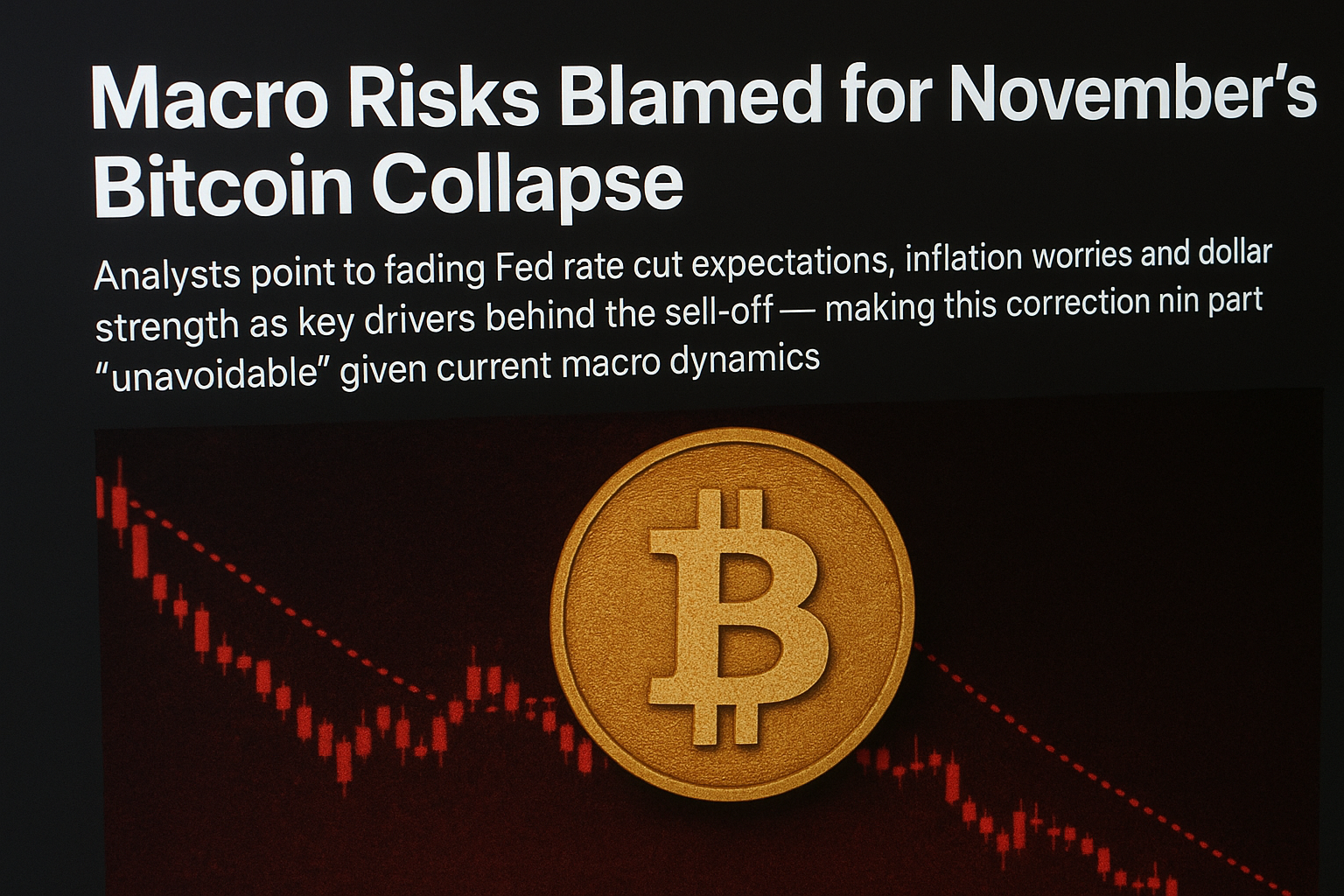November delivered one of the harshest corrections Bitcoin investors have seen in months. What initially appeared to be a sudden, sentiment-driven crash quickly revealed itself to be something far more structural: a macro-economic squeeze that left even the strongest risk assets struggling to stay afloat.
While Bitcoin’s volatility is nothing new, analysts argue that this specific downturn was largely inevitable—a direct result of shifting expectations around Federal Reserve policy, persistent inflation uncertainties, and renewed U.S. dollar strength. Together, these forces created the perfect storm, pushing Bitcoin sharply lower and triggering liquidations across the broader market.
The Fed Effect: Fading Rate-Cut Hopes Hit Risk Assets Hard
Through most of 2024 and early 2025, the narrative surrounding crypto was optimistic: the Federal Reserve was expected to begin cutting rates meaningfully, providing liquidity and relief for risk-on assets. But November changed that outlook drastically.
Recent economic data—particularly labor market resilience and stickier-than-expected inflation components—led markets to price out several expected rate cuts. Instead of easing, traders began to prepare for a “higher for longer” environment.
For Bitcoin and the wider crypto market, which had partially priced in cheaper money and increased risk appetite, this shift was devastating.
Higher interest rates:
-
Pull capital back toward Treasuries
-
Increase funding costs
-
Reduce liquidity in speculative markets
-
Strengthen the U.S. dollar
The result? BTC suddenly found itself operating against a macro backdrop far tighter than anticipated.
Inflation Worries Add Fuel to the Fire
Adding to the chaos was a renewed concern that inflation may not be cooling as smoothly as policymakers hoped. Supply-side pressures, energy price fluctuations, and rising global shipping costs have all contributed to a narrative that inflation’s descent could stall.
This uncertainty pushed institutional investors toward safer asset classes. When macro conditions shift toward caution, crypto tends to be among the first sectors to feel the pain.
Dollar Strength Strikes Again
A reinvigorated U.S. dollar also played a major role in November’s sell-off.
The dollar index surged as traders rotated into USD during market turbulence and rising yields. Historically, a strong dollar correlates with downward pressure on Bitcoin, since global investors need more local currency to purchase BTC.
As the dollar climbed, Bitcoin’s decline accelerated.
Why Analysts Say the Correction Was “Unavoidable”
Across multiple research desks—including those referenced by Bitget—analysts pointed to one shared conclusion:
Given the macro dynamics changing so rapidly, a correction was unavoidable.
Bitcoin had rallied aggressively in the months prior, benefiting from liquidity expectations that were suddenly no longer on the table. When the macro narrative flipped, the bullish structure cracked.
Notably:
-
Open interest was elevated
-
Leverage was rising
-
Retail optimism was near local highs
When the macro shock hit, these factors amplified the downside.
What Comes Next for Bitcoin?
While November’s collapse rattled traders, many analysts view the correction as a macro-driven reset rather than the start of a deeper bear market.
Key points supporting long-term optimism:
-
Institutional adoption continues to rise
-
Long-term holders remain steady
-
On-chain accumulation zones are forming
-
Market leverage has been flushed out
Still, much depends on the next moves from the Federal Reserve, inflation trends, and USD strength. Bitcoin’s path is now closely intertwined with global macro forces—perhaps more than ever before.
November’s Bitcoin collapse was not merely a crypto-specific event. It was a textbook example of how macro-economic realities can override bullish sentiment in minutes.
Fading Fed rate-cut expectations, persistent inflation worries, and a surging dollar combined to create an environment where a correction became virtually unavoidable. While painful, this downturn may also prove healthy—removing excessive leverage and setting the stage for a more sustainable path forward.
As always in crypto, the biggest shakes often precede the biggest opportunities.




